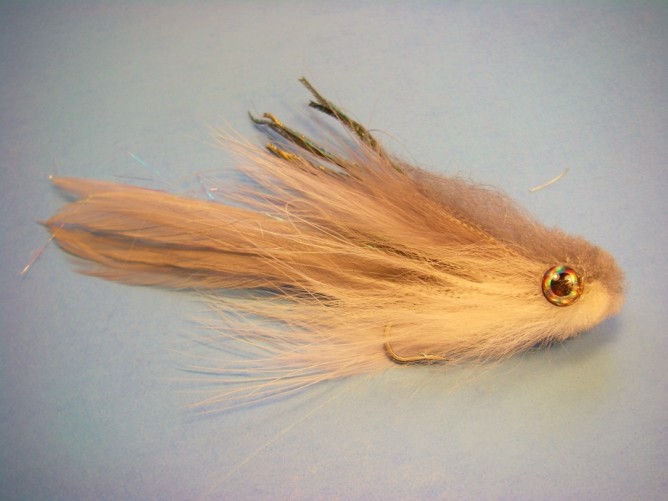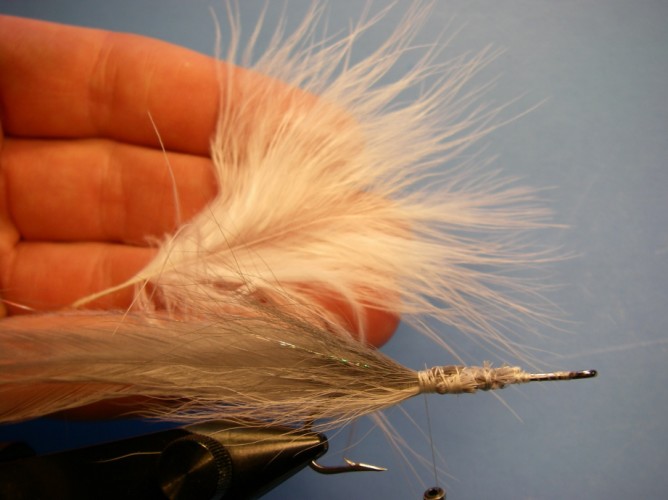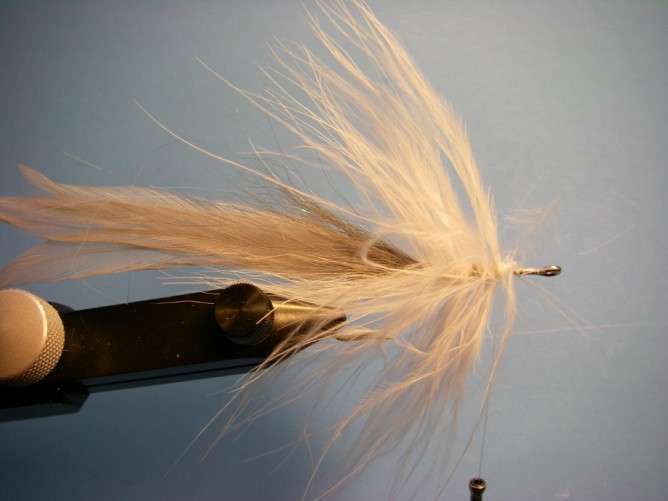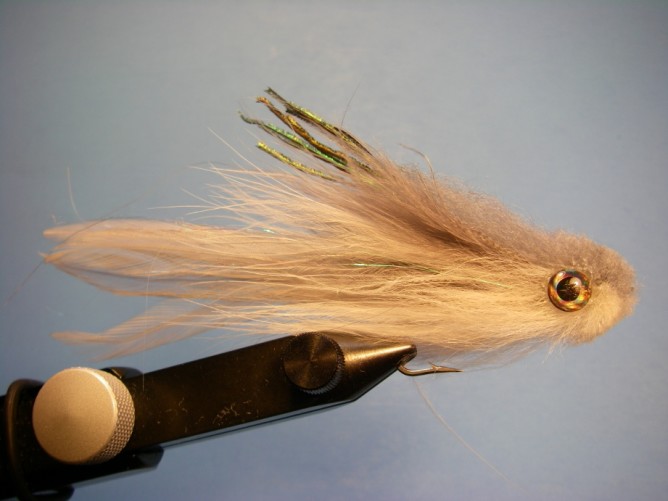This multi-species fly pattern is a variation of Jimmy Nix’s Shinabou, with the biggest difference being the head material. Rather than deer hair, the Bobble Head uses sheep hair and is trimmed somewhat bulbous, this – combined with its tendency to hold air, causes it to swim erratically during and after the strip. When stopped, the fly rises slightly in the column while the current imparts movement on the long tail. The result is an alive, but wounded, baitfish look that predatory fish have a hard time resisting. The name of the fly comes from the action the pattern shares with bobble head dolls, often found on the dashboard of a car. Even at the stop light, the bobble head still moves.
Fishing the Bobble Head
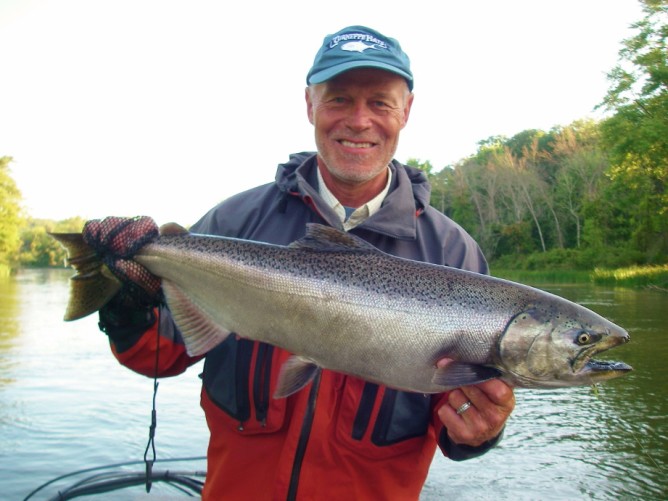
Baitfish Eating Salmon
There are a number of lines fly fishers can choose when using this pattern, but much of it depends on the type of water and species they are fishing. In rivers with decent current, I like to use 30′ sink-tips with noticeably long pauses between strips.
When fishing lakes in depths 5-12′ deep, consider a clear sink-tip line and slow strip for a unique neutral suspension as you work weed lines, drop-offs and other forms of structure; this presentation can be deadly, but is more finesse fishing than most anglers accustomed to fishing large streamer patterns are comfortable doing.
If fishing deeper water in lakes, use bigger sink-tips and strip it back a little faster than the clear intermediate lines once you count the cast down to the depth you desire.
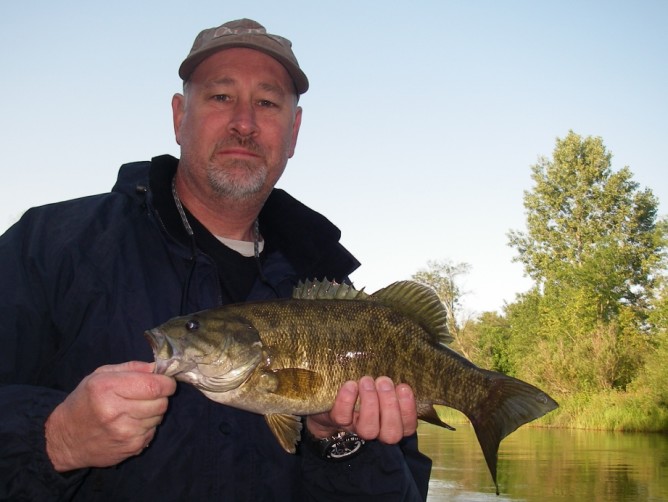
Smallmouth Bass
In shallow water / flats, a floating line can be deadly, but you will want to massage water into the fly first to keep it from floating on the surface.
I have used the Bobble Head Baitfish pattern for a number of species including trout, pike, musky, salmon, steelhead and bass. By changing up the color scheme you can alter this pattern to look like other baitfish found in the water you fish, i.e. chub, perch, rainbow, brook or brown trout. If those don’t work, there are attractor colors/schemes such as chartreuse/white, firetiger, or yellow variations (for river smallmouth bass).
Recipe
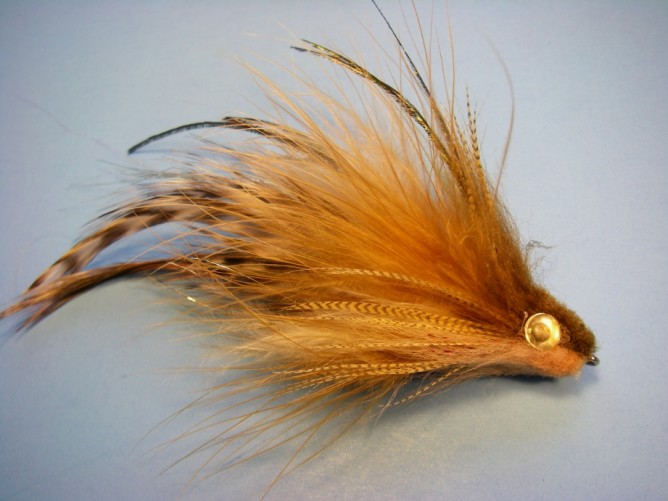 Hook: Mustad S74SNP #1
Hook: Mustad S74SNP #1
Thread: Fly Master + – White
Tail: Chinese Rooster Saddle
Flash: Angel Hair – Polar Ice
Foul Guard: Bucktail – White
Body: Marabou – White
Wing: Marabou – Gray
Collar: Mallard Flank
Topping: Peacock Herl
Head: Sheep Hair – White, Gray
Eyes: Holographic Silver – 1/4″
Lead: .035 Lead Wire
Tying Instructions:
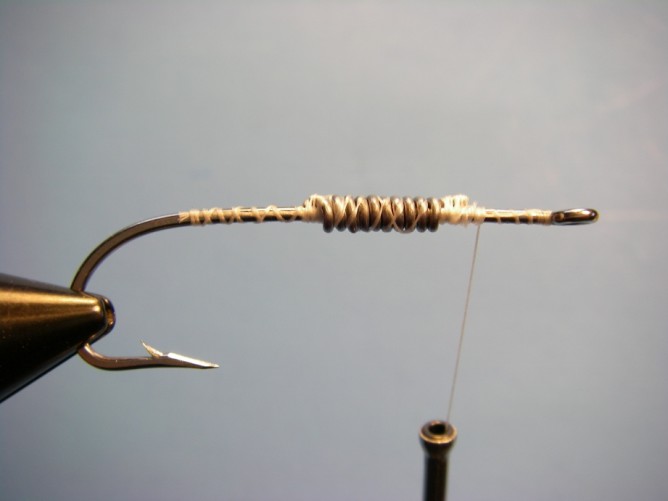
Step 1. Using 2 -1/2″ of lead wire, wrap just off of center favoring the hook eye.
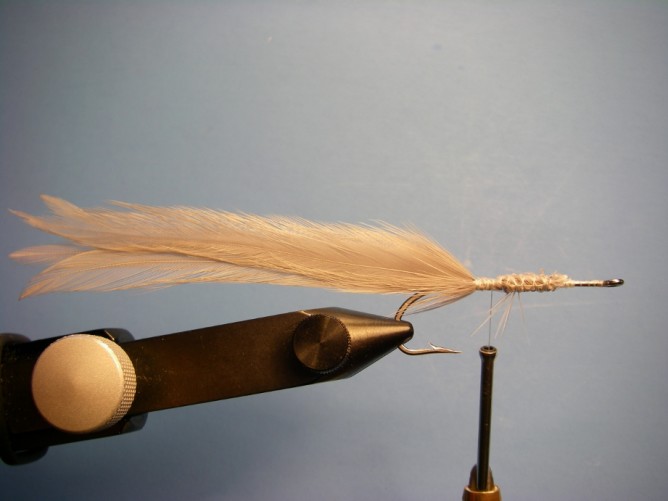
Step 2. Match four saddle hackles so they are the same size and shape. Select long, wispy feathers
to provide maximum action and movement when fishing. Tie in two feathers on each side of the
hook – convex side facing out, extending beyond the hook bend 1-1/2 to 2 hook shank lengths.
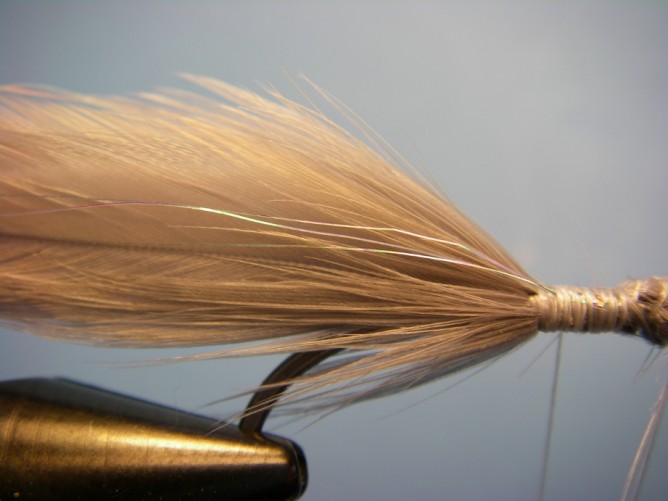
Step 3. Tie in a few strands of Angel Hair on each side and
trim so they don’t extend beyond the tail feathers. See note.
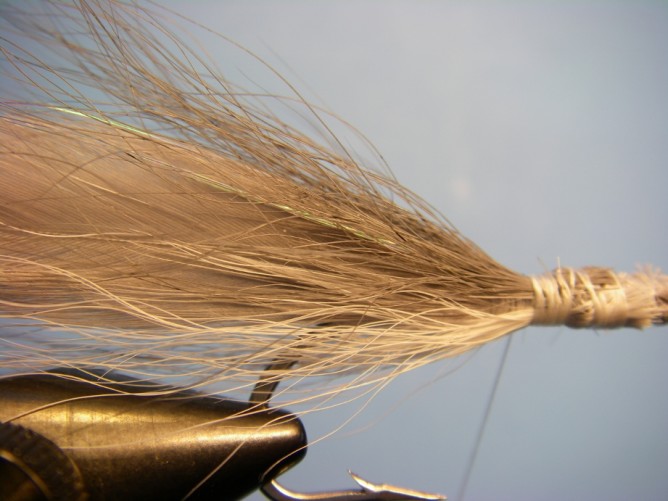
Step 4. Tie in a small clump of bucktail to help prevent the tail feathers
from fouling the hook. I happened to use white on the bottom and gray on top.
Step 5. Select a full and long white marabou blood quill feather and tie in by the tip.
Wrap/Palmer through the body, stopping about a hook gape’s distance behind the eye.
Tie in a few strands of Angel Hair on each side of the hook.
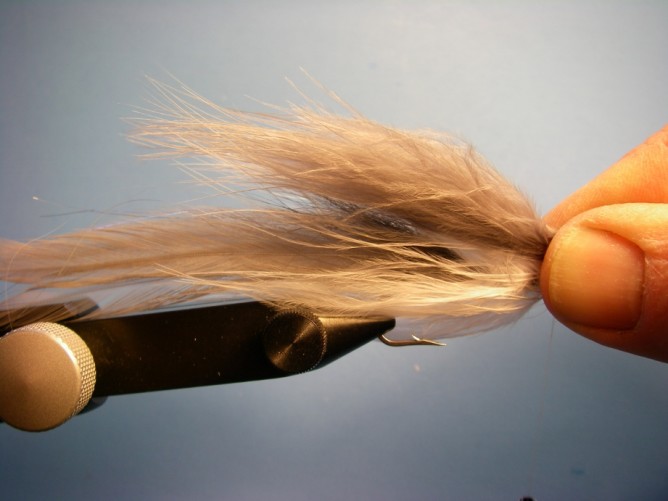
Step 6. Select a full and long gray marabou blood quill feather and tie
in on top of the hook extending approximately to half of the tail’s length.
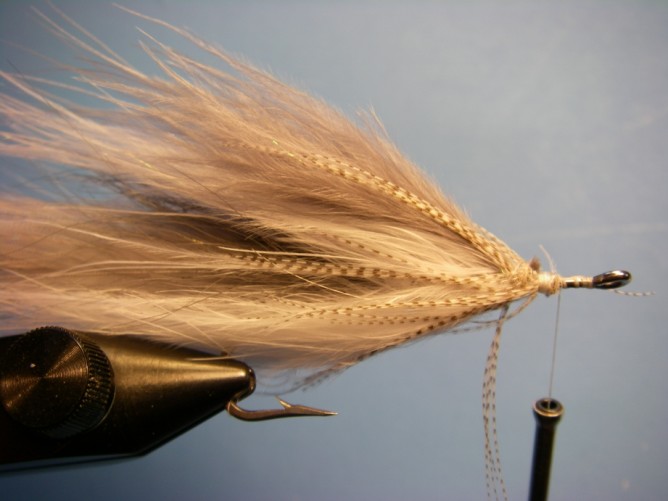
Step 7. Tie in a mallard flank feather by the tip and wrap a collar by folding the fibers backwards.
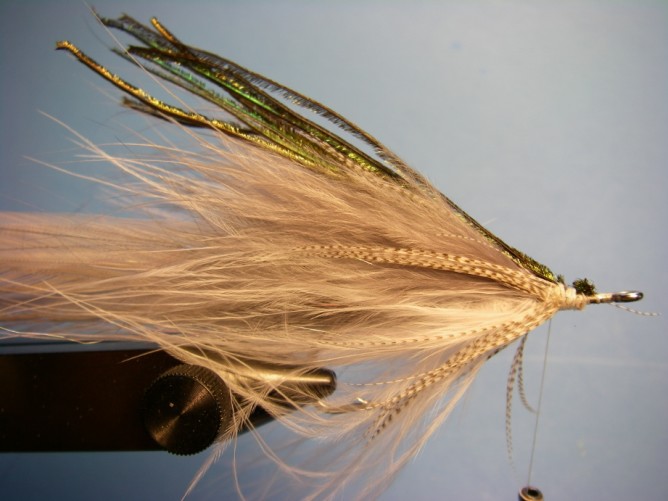
Step 8. Tie in 6-8 strands of peacock herl extending just beyond the gray marabou.
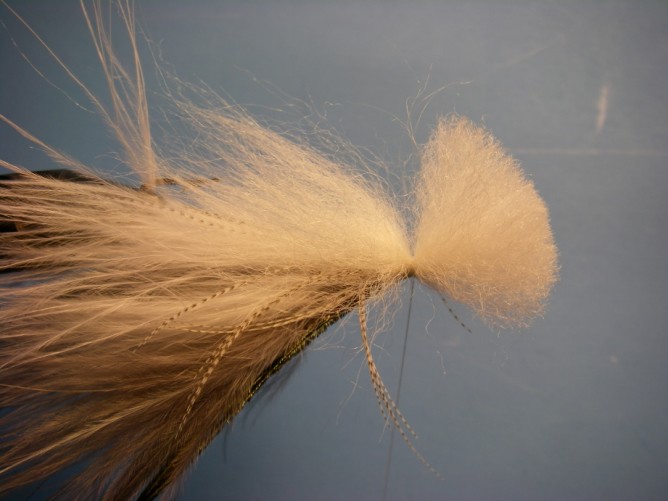
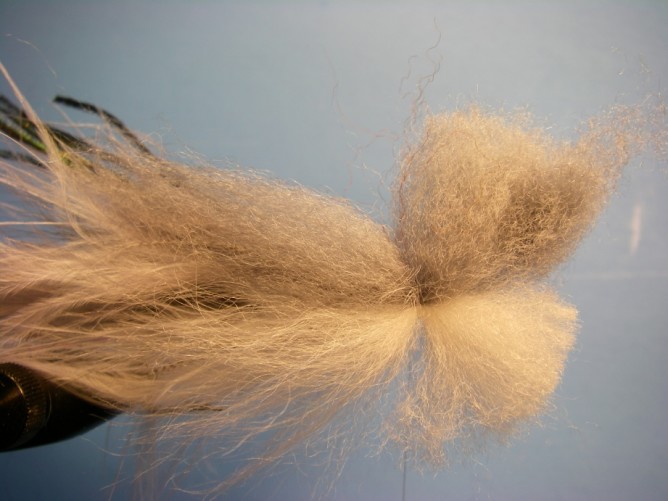
Step 9. Tie in a clump of white sheep hair on the bottom side of the hook, then, repeat on top with gray sheep hair.
After tying in, pull the butts backwards towards the bend of the hook and place a few wraps to encourage
the hair to stay there. You want the head to be tied in full because after trimming this will help provide
the shape and ultimately the movement of the fly – hence the name of the fly. Whip finish.
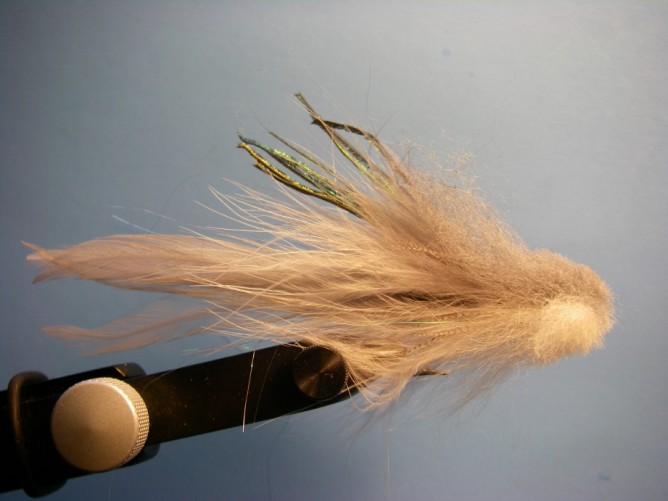
Step 10. Trim the sheep hair top and bottom so the butt ends of the hair transition to the natural tips.
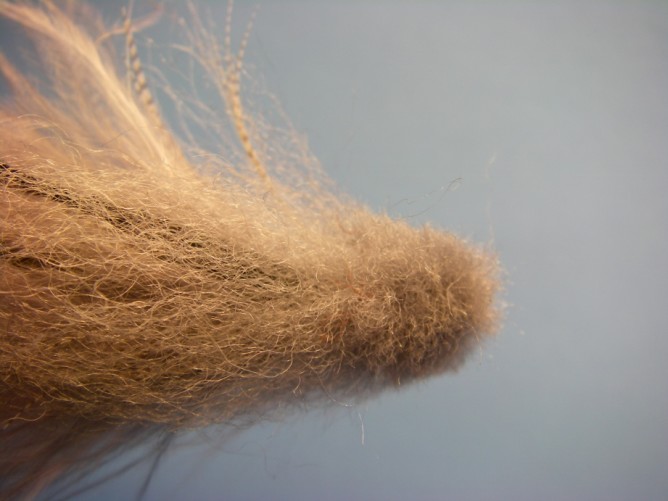
Step 11. Trim the sides of the sheep hair head so they are relatively flat – this serves as
a keel helping the fly to track while providing the preferred profile. (Photo is a top view)
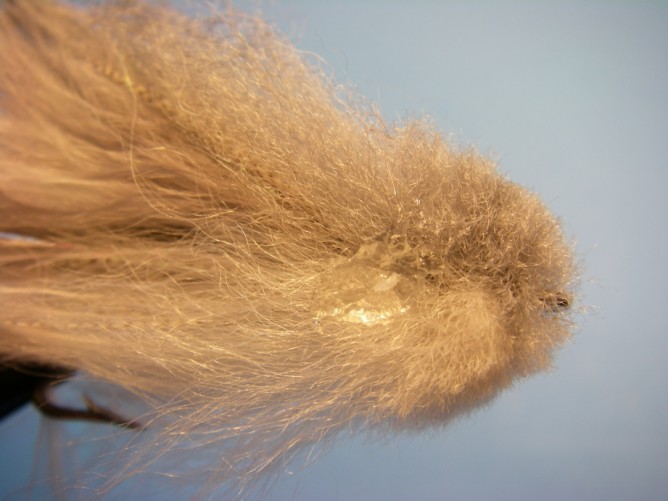
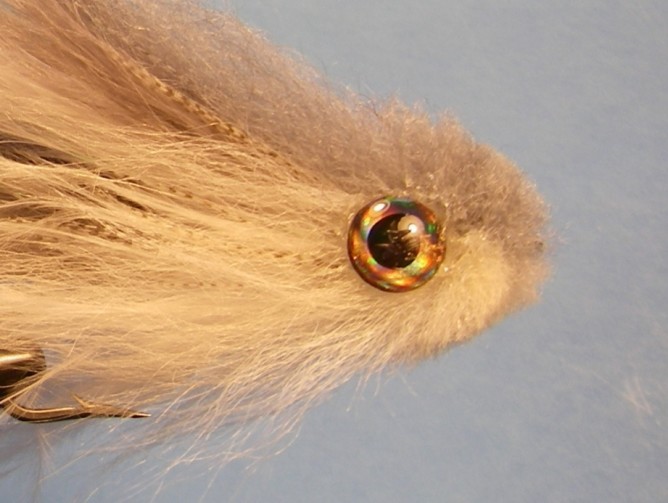
Step 12. Apply a generous blob of Super Fabric Textile Adhesive where the sheep hair tie down section is.
Apply a 3-D Eye to each side of the fly and squeeze the adhesive into the sheep, head not only to
secure the eyes but also to stiffen and shape the head to help with profile and fly tracking.
Finished Bobble Head Baitfish Pattern – 4-1/2 inches long
Notes:
– When varying the pattern’s color, consider using natural or dyed grizzly feathers offering natural barring to the pattern.
– You can tie additional flash/Angel Hair into this pattern for dirty water or low light conditions but trim it away while on the water if need be.

